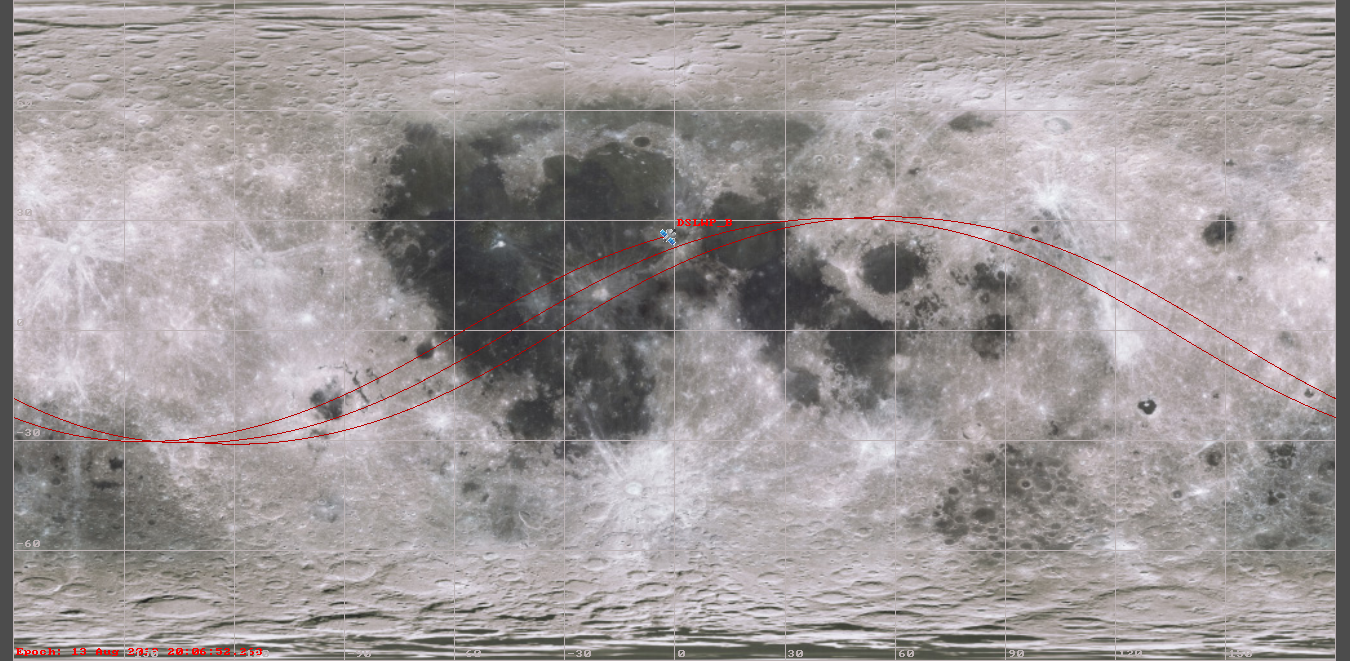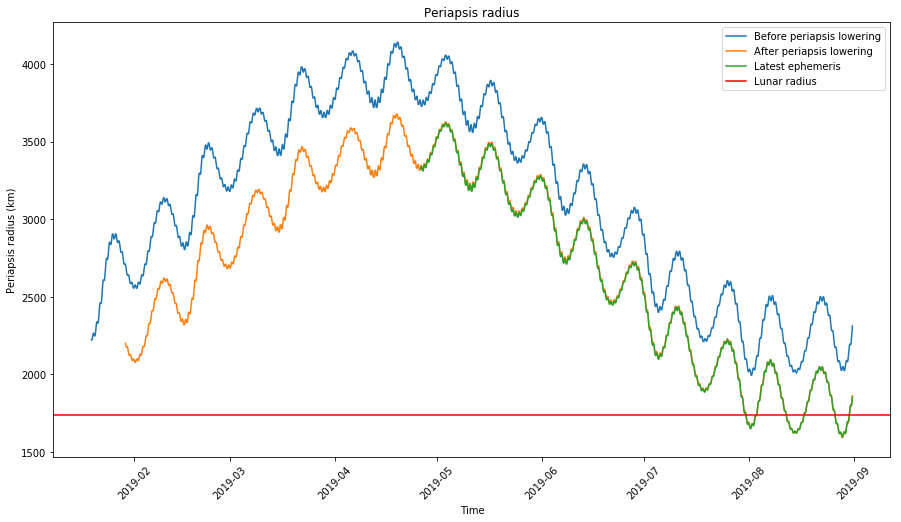A few days ago, I spoke about the future impact of DSLWP-B on the lunar surface, which will happen in the far side of the Moon around the end of July, and how the spacecraft could be manoeuvred to make the impact point fall on the near side of the Moon instead, so that it can be observed from Earth.
Philip Stooke made a very good remark in the comments saying that the impact might have been planned on the far side of the Moon deliberately in order to avoid Apollo landing sites and other heritage sites. This is a very valid concern. By all means, the crash should be planned to avoid disturbing heritage sites or other areas of specific interest.
It is easy to compute in GMAT the location of the impact point. Using the 7m/s prograde burn that I proposed, we obtain the following.

The exact location of the impact is 25.8098º of latitude and -1.7261º of longitude. This is located in Palus Putredinis. The map of the Apollo sites can be browsed in Google Moon, and Wikipedia has a more complete map including Russian and Chinese landings. The nearest heritage site to the impact point is Apollo 15, at 26.1322°N 3.6339°E. The separation between both sites is approximately 150km. This is relatively small if we consider that the Moon radius is 1737km and that there are only a dozen historical sites scattered over the near side.
I have tried to modify the delta-v of the manoeuvre to change the impact point. With careful planning it should be possible to put the impact point well away from any heritage site. However, this is not so easy to do. If we look at the figure below, which appeared in this post, we can understand why.

If we raise or lower the periapsis radius slightly, the impact date only changes by a few days. This makes the impact point fall nearby, since the Moon has not rotated much in these few days. If we raise the periapsis radius enough, then the impact date is delayed to the next local minimum of the curve, which happens in approximately half a lunar month. In this time, the Moon has rotated half a turn, so the impact point falls on the opposite side of the Moon.
This is the technique that I used when I proposed the manouvre to delay the impact until mid August and make the impact point fall on the near side of the Moon. However, we don’t have much freedom to adjust the longitude of the impact point to make it fall further from Apollo 15. If we increase the delta-v slightly, then the impact point is close by. If we increase it more, then the impact point is delayed to late August so that it falls on the far side.
In any case, I think that 150km of clearance from the Apollo 15 site is enough, provided that the necessary precision can be guaranteed both in the determination of the orbital state (an error in the right ascension of the ascending node could make the impact point fall dangerously close to Apollo 15) and the delta-v. This is something that will require the feedback from the operators of the satellite, if they are interested in making this kind of manoeuvre.
Hello. Thanks for doing this, it is very interesting. If no change is made to the orbit, can you predict where the impact will occur on the far side?
Hi Phil, The impact point if no changes are made to the orbit can be predicted in the same way. The accuracy on the prediction will depend on the accuracy of the ephemeris, so it is best to run the simulation when there are fewer days left for the impact.
Thanks! We will see what happens. Thank you for your excellent work on the lunar imaging and tracking.